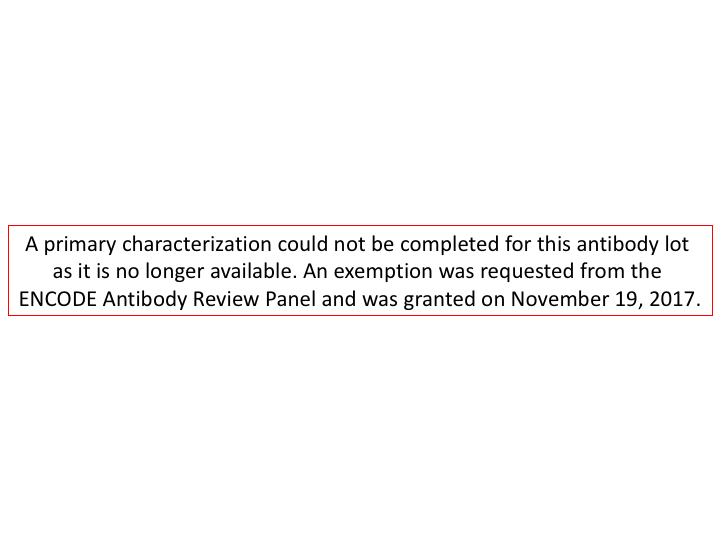ENCAB435FBQ
Antibody against Aequorea victoria eGFP
Caenorhabditis elegans
whole organism
characterized to standards with exemption
- Status
- released
- Source (vendor)
- Anthony Hyman
- Product ID
- non-commercial eGFP modENCODE antibody 1
- Lot ID
- unknown
- Characterized targets
- eGFP (Aequorea victoria)
- Host
- goat
- Clonality
- polyclonal
- Purification
- affinity
- Antigen description
- A Bacterially expressed full-length EGFP protein tagged with 6xHis was used to raise a goat antisera, and the resulting antibodies were affinity-purified.
- Antigen sequence
- Full-length EGFP
- External resources
Characterizations
eGFP (Aequorea victoria)
whole organism
exempt from standards
- Caption
- A primary characterization could not be completed for this antibody lot as it is no longer available. An exemption was requested from the ENCODE Antibody Review Panel and was granted on November 19, 2017.
- Submitter comment
- We have run out of this antibody lot so we cannot do a primary characterization. This antibody lot was a gift from Anthony Hyman at the Max Planck Institute of Molecular Cell Biology and Genetics
- Reviewer comment
- Exemption granted on the account that this is an antibody to GFP and not to a protein naturally produced in flies or worms and assuming, of course, that the ChIP-seq peaks are different for the different tagged proteins (which would rule out cross-reactivity with a cellular protein).
- Submitted by
- Esther Chan
- Lab
- J. Michael Cherry, Stanford
- Grant
- U41HG006992
- Download
- ENCAB435FBQ_primary.png
eGFP (Aequorea victoria)
compliant
- Caption
- ChIP-seq (ENCSR336KUP) was performed with an antibody (ENCAB564AON) that targets the EFLl-1 protein in L1 larva. ChIP-seq (ENCSR898YRV) was also performed with an antibody (ENCAB435FBQ) that targets the eGFP tag in the YL424 strain which stably expresses eGFP-EFL-1. Occupancy sites were identified with the MACS peak caller and compared using IDR (Landt et al. 2012, Li et al. 2011, https://sites.google.com/site/anshulkundaje/projects/idr). Results: Most rescue ratios (Np/Nt) and self-consistency ratios (N1/N2) ratios are less than 4, indicating significant replication of binding sites when ChIP is performed with the two antibodies directed against EFL-1.
- Reviewer comment
- The IDR comparison between the replicate 2s had self-consistency and rescue ratios ~1.5 or below as allowed by the standards used in modENCODE.
- Submitted by
- Alec Victorsen
- Lab
- Kevin White, UChicago
- Grant
- U41HG007355

